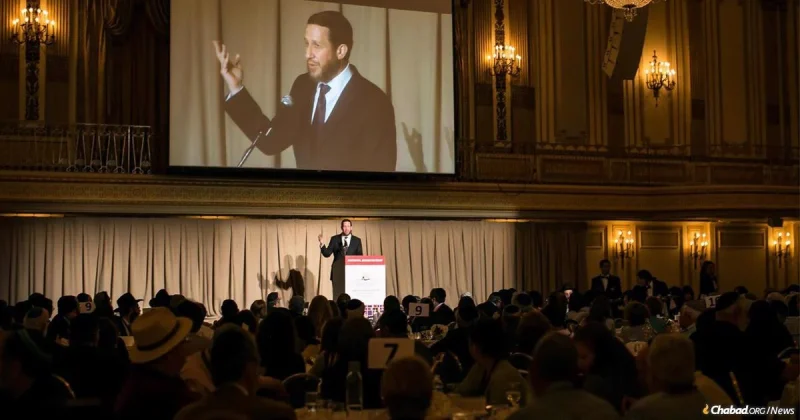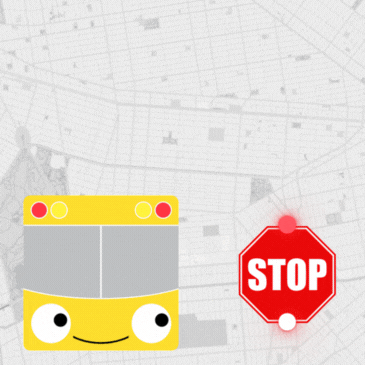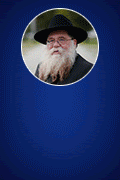
What Four Rabbis Are Sermonizing This High Holiday Season
by Shloimy Galperin – chabad.org
When rabbis sat down to write their sermons last year for the first Rosh Hashanah after the atrocities of Oct. 7, 2023, they knew that the hearts of their audience members were receptive and yearning for connection. The rippling antisemitism that coursed through the world in the aftermath of the attack had left a deep impression on worldwide Jewry and changed the lives of countless individuals. More than anything, it had uncovered the pintele Yid, or “inner Jew,” and had been the cause of an increase in unity, Jewish practice, and pride.
Does all that still hold a year later, the shock having subsided and the post-Oct. 7th world now a reality? We asked four rabbis to walk us through what they’ll be sharing in their synagogues during this High Holiday season.
‘Reframing the Mindset’
In London, Rabbi Yitzchok Schochet of Mill Hill Synagogue is preparing for a High Holiday season unlike any other. A member of the Chief Rabbi Ephraim Mirvis’ cabinet and chairman of the Rabbinical Council, the rabbi is acutely aware of the weight this year’s sermons carry.
“I have two rules when writing speeches,” explains Rabbi Schochet. “First, I never repeat. Second, as per the Yiddish expression, ‘men zogt yenem un men maint zich,’ – you say you are talking to someone else, but you’re really talking to yourself. I need to feel really passionate about what I am going to share. Any rabbi who is going to get up and speak must speak their own words –devarim hayotzim min halev, ‘words that come from the heart.’”
Last year, Rabbi Schochet knew he had to feature a tribute to those lost on Oct. 7. To honor the memory of those lost, Mill Hill Synagogue featured a pure white bimah cover inscribed with the names of the 1,200 slain.
Now, as another year passes by, and the war continues, people can’t help but wonder whether this has become the new normal. “It’s called trauma fatigue,” explains Rabbi Schochet. “Still, many have held on, and in some ways, the war with Iran reignited that awareness: that our very survival is not a given, and that G‑d’s hand is real. The question isn’t whether people’s souls got ignited. They did. The question is whether we can nurture that into a steady flame. That’s our task this year.”

The Jewish people have always known that they are G‑d’s cherished nation, but the daily grind often gets in the way of recognizing this, as well as the larger picture of the Divine plan.
“We are surrounded by hidden miracles every day, and our response must be to recognize them and the reality of G‑d’s ever-presence in our lives.” This is the essential message Rabbi Schochet plans on imparting to his congregation this year. “We witnessed in real time a Biblical-scale miracle when Israel was bombarded with hundreds of missiles from Iran, and yet the vast majority were intercepted. Many things have gone wrong, but they did not. That was not just technology; it was the hand of G‑d protecting us.”
Rabbi Schochet explains that these are not abstract themes but immediate realities. “My goal is to give people both perspective and strength,” he says. “Antisemitism is not a new phenomenon. The wonder isn’t the sudden rise in Jew hatred. The wonder is that we’ve had it so good for so long. We look back at our ancestors—whether in Egypt, Persia, Spain, or Poland—and we see that they did not survive by hiding. They survived by doubling down on faith and unity. Learning from that, our present duty is to live proud Jewish lives, not watered down by fear. That’s what ensures a future where our children inherit not just survival, but confidence. That is a message I intend to put across this year.”
Rabbi Schochet’s message will reach an audience of about 2,500 people. His approach is thoughtful and deliberate, tailoring each speech to the specific crowd—from regular attendees to those who only visit a few times a year to those whose only synagogue visit may be that day itself.
“I imagine myself delivering the sermon,” Rabbi Schochet explains of his preparation. “I imagine the faces of different people in the synagogue and how they might react. I see their faces as I prepare each line. Some enthused, some emotional, some even angry—if that’s the case, I might choose to change the language. I don’t want to alienate anyone.”

‘People are Looking for Hope’
Rabbi Altie Bukiet, director of Chabad-Lubavitch of Lexington, Mass., says his focus this High Holiday season is inspiration. “I think a lot of people are looking for hope. I see in people that they are desperate for goodness, something good to come out of this,” he says.
Rabbi Bukiet says that he has observed within his community as well as broader Jewry the deep impression of the plight of the mothers of the hostages.
Accordingly, the rabbi plans to explore the difference between the two types of maternal crying found in Jewish texts in relation to Rosh Hashanah: the mother of Sisera—commander of the Canaanite army—whose tears are mentioned in the Talmud as being the reason that we blast 100 shofar sounds on Rosh Hashanah, and that of Chana, who cries to G‑d to grant her a son in the book of Samuel.
“There is one type of cry, which is a cry of pure desperation with no hope at the end,” Rabbi Bukiet explains, referring to Sisera’s mother, who was lamenting her son, who had not come home from war. “This cry has no continuation. There is no action to follow it. Just pure tearful longing. But then there’s a cry of desperation that fundamentally has hope at its end,” he says, alluding to Chana’s prayer, where there was a continuation to the story, namely the birth of Shmuel. “This cry represents victory.”

Drawing a connection to the Jewish people’s current circumstances, Rabbi Bukiet notes, “We, as a nation, have been immersed in the tears of the hostages’ mothers. It’s been a major part of Jewish life. This cry of the parents has captivated us. We’ve been enthralled by the words of Rachel Goldberg-Polin and by every snippet we see on the news about the parents of the hostages.”
Rabbi Bukiet relates this idea to the shofar blasts on Rosh Hashanah. The teruah, a series of short, staccato blasts—representing the pure brokenness of Sisera’s mother—is always followed by the tekiah, a long, straight blast. “This blowing does not just come from brokenness; it comes from the hope at the end. Sometimes, when we are crying, we don’t know what the tekiah (hope) will be. In many people’s eyes, the tekiah is already happening,” the rabbi explains.

‘You Can Rise Like a Lion’
In Marietta, Ga., Rabbi Ephraim Silverman, who co-directs Chabad-Lubavitch of Cobb County, plans to address the age-old issue of antisemitism head-on this High Holiday season. As he puts it: “Hatred rises against us everywhere. On campuses. In city streets. In governments. Antisemitism doesn’t hide anymore. It marches. It shouts. It attacks.” Yet, there is a difference. The response of the Jewish people has changed drastically.
For generations, Jews under threat often responded with caution and quiet dignity,this strategy sustained their ancestors throughout history. Their restraint, born of necessity, preserved the spark of Jewish life in even the darkest corners of exile.
Today, that reality has shifted. The relationship Judaism has with the world has changed. The freedom Jews experience is not just the absence of oppression; it is the opportunity to practice Judaism in a way that radiates outward. And celebrating Judaism openly shows the world that there is a G‑d, and that every person has a role in His divine mission.
“The Rebbe,” Rabbi Silverman says, referring to Rabbi Menachem M. Schneerson, of righteous memory, “didn’t seek to recreate the Jew of the shtetl. His vision was to cultivate unprecedented Jewish pride, unapologetic and free.”
Yes, the Jews are in trying times once again, but their youth have risen like lions in the face of terrorism and hatred, Rabbi Silverman says. Alongside them, hand in hand, stand Jews from around the world who respond in their own way by increasing their Jewishness.
That is at the heart of Rabbi Silverman’s message: “You have a choice. You can either wring your hands in self-pity, or you can rise like a lion with our brothers and sisters. Rise up. Stand tall. Be proud.”

‘Inside Out Positivity’
In Fairfield, Conn., Rabbi Shlame Landa simultaneously runs a children’s program during services and draws different crowds to afternoon Tashlich in the park. In his sermon this High Holiday season, Rabbi Landa tackles what he sees as the root of many problems plaguing both individuals and communities: the fundamental relationship between how the Jewish people view themselves and how they perceive the world around them. People who harbor negative self-perceptions inevitably project that same darkness onto others, creating cycles of judgment, criticism, and disconnection that ripple through families and communities. As he put it: The critical voice turned inward becomes the critical voice turned outward.
On the flip side, when Jews develop a positive self-image, they view other people in the same manner and see the good in them. By genuinely cultivating positive feelings about ourselves, recognizing their inherent worth and potential, that same generous (and simultaneously accurate) perspective naturally extends to how they treat others.
“A couple of weeks ago, I received a phone call from a community member,” relates Rabbi Landa. “The woman on the phone was disappointed that her children wouldn’t be joining her for the Rosh Hashanah meal. When she had called to invite them, they told her they had already made plans to attend a concert. I found myself on the phone with this shocked mother, who painfully asked me how her children could spite her like that. Their recent interest in Judaism must all have been fake inspiration, she reasoned. I responded that we must give them the benefit of the doubt. Perhaps they had forgotten which days Rosh Hashanah fell on when they made their concert plans. I told her that the manner in which she responds this time will determine their future participation. Next year, they will remember how you handled this moment. Wouldn’t it then be more beneficial to take the more positive approach?”
Building on this foundation, Rabbi Landa moves to what he considers an essential truth about Jewish resilience: the importance of remaining in control of our internal experience, no matter what storms rage in the external world. A true positive perspective doesn’t fall apart when it is opposed by negativity. “We are always in the driver’s seat. Antisemitism is a pertinent and painful issue, but our response never ceases to be in our control. When faced with negativity, we double down on positivity. This is what the Rebbe always taught us.”

This isn’t about denying difficult realities or maintaining superficial optimism. Rather, as Rabbi Landa argues, even the most hostile forms of antisemitism, personal setbacks, or global chaos cannot steal our inner light unless Jews voluntarily surrender to victimhood.
But Landa’s most challenging message addresses how his community engages with their Jewish identity, especially during these times of rising antisemitism and global instability. “People are afraid of showing their Judaism outwardly. One person tucks his Magen David necklace into his shirt, and another pockets his kippah.”
The proactive approach that Rabbi Landa plans to champion in his talks involves diving deeper into the richness of Jewish life itself. Learn Torah and do mitzvot!
Rabbi Landa’s approach fosters unshakeable Jewish pride through authentic love of tradition rather than fear, exemplified by his “stump the Rabbi” sessions before Yom Kippur services—what began as a strategy to gather a minyan has become an eagerly anticipated community event that teaches Judaism’s fundamental beliefs. These three interconnected principles offer his diverse Fairfield congregation a framework that begins with personal transformation and extends outward to strengthen the entire Jewish community.
For the thirty days of the month of Elul, G‑d meets the Jewish people on their turf, in the arena of the mundane and day-to-day hustle. Now, as the auspicious days of Elul come to a close, they prepare to follow G‑d into His palace, leaving their busy schedules behind and create the new year G‑d had always envisioned since the beginning of time. In the holy walls of the synagogue, immersed in an oasis of holiness and transcendence, they ready themselves to meet Him once again on the field in 5786—only this time with the recognition that the whole universe is His kingdom.












